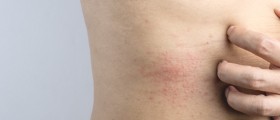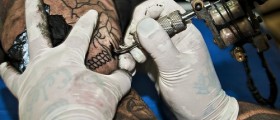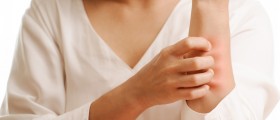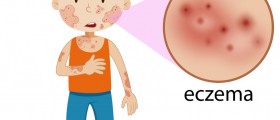
When a person gets skin rash it might mean that he or she is suffering from some inflammatory problem of the skin. Skin specialists (dermatologists) differentiate such rash according to its color, size, density, shape, tenderness or even temperature and also according to its location on the body. Some people may also have some scaling, scabbing or ulcers on the skin affected by rash and this may also be an important finding for a dermatologist.
The most commonly found skin rashes belong to one of three categories, including non-infectious localized rashes, rashes caused by some bacterial or fungal infection or rash that affects large portions of the skin. If the problem resolves quickly, it is probably not problematic and you do not need to consult your doctor. However, always visit your doctor and/or your dermatologist to find out what have caused the rash which does not go away for some time.
Localized Skin Rash on Dry Skin
Most localized skin rashes respond well to the treatment with OTC (over-the-counter) creams containing 1% of Hydrocortisone so you could try this before visiting your doctor. This treatment commonly lasts for a week or so and if the rash does not get better – it is time to seek some professional help and consult your dermatologist about it.
Localized skin rashes can affect different parts of the body and we can distinguish several types of such rashes. There is diaper rash, common for babies whose skin has been in contact with urine and feces for some time, then contact dermatitis (when the patient is allergic or sensitive to something, such as poison ivy, nickel jewelry or some chemicals) and also some nummular eczema, often seen in winter in people with very dry skin.
Non-infectious rashes are also atopic and seborrheic dermatitis, as well as stasis dermatitis and psoriasis. Skin Rash Caused by Infection
As mentioned earlier, various bacterial and fungal infections of the skin may also provoke skin rash. Impetigo is one of bacterial infections which may lead to skin eruptions and cellulitis (not cellulite!). This problem is caused by Staphylococcus or Streptococcus bacteria and not by poor hygiene. Most doctors prescribe some oral antibiotics or creams (Bactroban) for this purpose.
Fungal infections are also very common causes of skin rash, usually transmitted in moist and warm environment such as pools, showers, locker rooms or gyms. Treatment usually involves some over-the-counter (OTC) anti-fungal creams, which contains substances such as terbinafine or clotrimazole.

















Your thoughts on this
Loading...